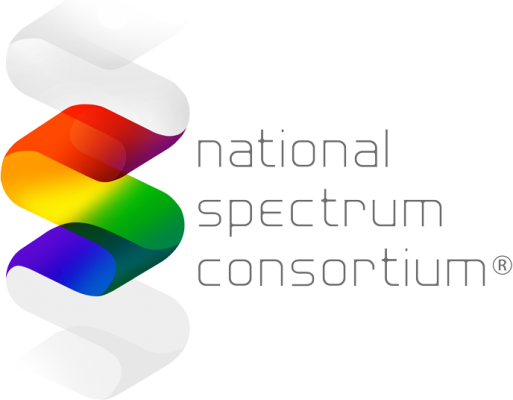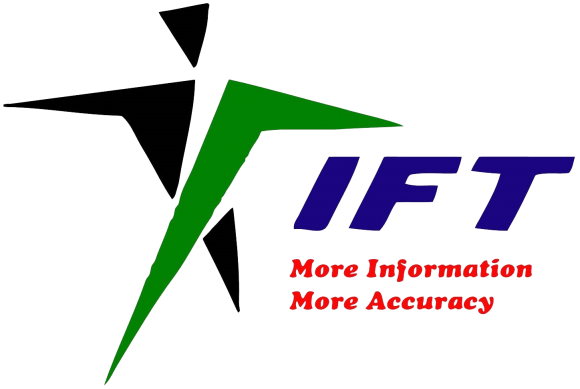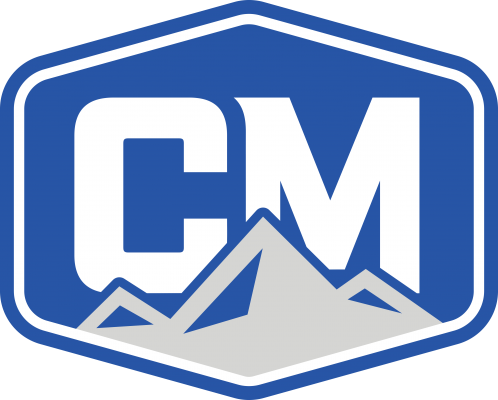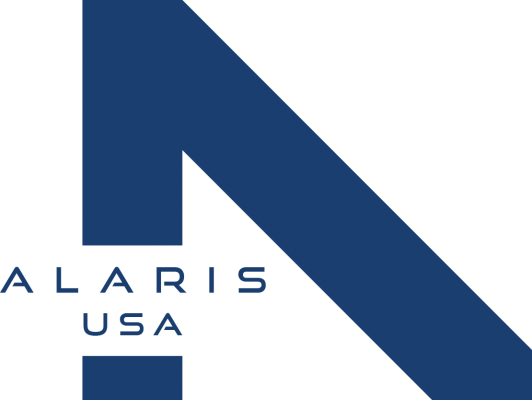We are pleased to announce our Classified Program will take place on Thursday, 1 December & Friday, 2 December 2022. The hosting facility is offsite at MITRE located at: 7596 Colshire Drive, McLean, VA 22102-7539. Transportation and meals will be provided.
Classification Level:
- Secret and Top Secret on Thursday, 1 December
- Top Secret/Sensitive Compartmented Information on Friday, 2 December
Detailed instructions on where to submit your clearance once you register and pay.
A part of the requirement to be on-site at MITRE is verification of COVID-vaccine and it can be either an image on a cell phone or the physical copy.
Instructions on Passing Visit Clearances to The MITRE Corporation for MILCOM 2022
Visit Access Requests (VARs) must be received by the MITRE Security Office no later than five business days prior to the meeting date. Please ensure the MITRE technical point of contact (POC) or meeting host is listed and identify the security point of contact.
MILCOM Host/POC: Dave Scher, Director, Infra & NW Innovation Center, MITRE
Email: dscher@mitre.org
Office: 781-271-5382
Security POC: Lisa Kirksey, Senior FSO, MITRE
Email: lkirksey@mitre.org
Office: 703-983-1238
Always verify receipt of the VAR by calling the appropriate security office.
VARS are accepted and preferred through DISS but call the location for a fax number if needed. The following information will need to be included on all VARs that are faxed:
- Visitor name, rank (if applicable), social security number, date of birth, place of birth, and citizenship
- Clearance level and date of eligibility
- Investigation type and close date of investigation
- Purpose and duration of visit
- POC and phone number
Collateral and SCI accesses are sent through one SMO. SMO information can be found in the table below. If you plan to pass SAP accesses, contact the POC of the meeting for instructions.
|
Location of Meeting |
All Visits |
Collateral Security Phone/Fax Numbers |
Special Programs Phone/Fax Numbers |
|
McLean, VA |
7L030 |
703-983-7777 |
703-983-6358 |
|
|
|
|
Send via Company Special Programs or Government Special Programs (with passing instructions “Pass to MITRE/McLean Special Programs”) |
Faxing SCI Visit Request to MITRE
Contractor Personnel: Company Special Programs Office forwards SCI Visit Request Attn: Special Programs Visitor Control (Patti Benbow and Gail Shelton) Phone 703-983-9553 Fax (U) 703-983-6012 Fax (S) 703-748-0420 or 703-983- 1299; or through CIB, now CIS Fax (U) 703-374 1530 or 1529; (S) Fax 703-796-2949 or 2950 with instructions to pass to MITRE/McLean, VA. SSO can also send via DISS using SMO code 7L030.
Government Personnel: Same information as above except government Special Programs can pass SCI Visit Request directly to the MITRE Special Programs. Government Special Programs can also send via DISS using SMO code 7L030.
For general questions, please contract Special Programs Visitor Control (Patti Benbow and Gail Shelton) Phone 703-983- 9553
Visitor Attestation
As part of MITRE’s response to COVID-19, we require visitors to complete the following acknowledgement prior to entering our facilities.
- I am compliant with MITRE’s vaccination requirements for entry.
- I am personally responsible for my health, safety and actions while at MITRE.
- Because MITRE is open for business and used by other individuals, I recognize that I may be in close proximity with other persons while on MITRE premises.
- I agree to comply with MITRE's policies and rules, including but not limited to all MITRE COVID-19 policies, guidelines, signage, and instructions.
- I am not currently experiencing any COVID-19 related symptoms as defined by the Centers for Disease Control and Prevention.
MITRE Campus Map
MITRE Campus Directions
MITRE Buildings 1(H), 2(N), 3(T), 4(J)
7525, 7515, 7594, 7596 Colshire Drive, McLean, VA 22102-7539
Phone: (703) 983-6000

From Reagan National Airport
- Take George Washington Parkway North approx. 6 miles to Route 123 South, McLean exit.
- Exit onto Route 123 (also called Dolley Madison Blvd.), follow south for approx. four miles to traffic light at Colshire Drive (on left).
- Turn left onto Colshire Drive and continue through circle on Colshire.
Follow parking directions for Buildings 1(H), 2(N), 3(T), and 4(J) below.
- OR -
- Take I-66 West to Exit 67 to Route 267 (Dulles Toll Road).
- Take Exit 19A, following signs to Route 123 South (also called Dolley Madison Blvd.), follow south for approx. 1/4 mile to traffic light at Colshire Drive (on left).
- Turn left onto Colshire Drive and continue through circle on Colshire.
Follow parking directions for Buildings 1(H), 2(N), 3(T), and 4(J) below.
From Dulles Airport
- Take the Dulles Airport Access and Toll Road to Exit 19.
- Take Exit19A, following signs to Route 123 South (also called Dolley Madison Blvd.), follow south south for approx. 1/4 mile to traffic light at Colshire Drive (on left).
- Turn left onto Colshire Drive and continue through circle on Colshire.
Follow parking directions for Buildings 1(H), 2(N), 3(T), and 4(J) below.
From Route 495 (Beltway)
- Take Exit 46B (McLean, Route 123).
- Take Route 123 North (also called Dolley Madison Blvd.), go to the second traffic light at Colshire Drive.
- Turn right on Colshire Drive and continue through circle on Colshire.
Follow parking directions for Buildings 1(H), 2(N), 3(T), and 4(J) below.
By Metrorail
- Take the Metro Silver Line train to the McLean Station.
- After exiting the fare gates, stay to the right and follow signs for “South Entrance/Buses/Parking/Kiss & Ride.”
- Cross the pedestrian bridge over Dolley Madison Blvd. (Rt. 123) and then take the escalator/elevator down to street level before walking uphill on Colshire Drive toward the main MITRE campus.
- Walking from the fare gates to the MITRE 2 lobby takes about 6 to 10 minutes.
You may also ride the MITRE Metro/Interoffice Shuttle from the Kiss & Ride area of the station. Look for a white van with a red sign on the door that reads “MITRE Metro Shuttle.”
The MITRE shuttle travels to MITRE 4, 2, and 1 buildings and returns to the Kiss & Ride parking area. Please consult the shuttle schedule to help you board at the right time to minimize your trip. Be prepared to show your MITRE or government ID or related MITRE correspondence (event registration or invitation, etc.).
Parking for Buildings 1(H), 2(N), 3(T), 4(J)
Building H: Parking is available in the East and West parking lots. Enter the lobby designated by the point of contact.
Building N: Take third right off traffic circle, proceed approx. 50 yards, turn right into MITRE 2 parking garage (all levels). Walkway to the lobby is located on P2 of garage.
Building T: Take third right off traffic circle, proceed approx. 50 yards, turn left into MITRE 3 parking garage (all levels).
Building J: Turn right into MITRE 4 parking area, proceed straight into MITRE 4 parking garage (all levels). MITRE 4 lobby is located on the top level of the garage.
Classified Program Keynote Speakers
Dr. Vincent Chan
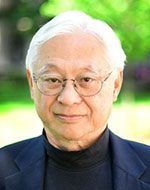 Vincent Chan received his BS/MS/EE/PhD from MIT (1971-1974.) He was the Head of the Communications and Information Technology Division of the MIT Lincoln Laboratory (now Cyber and Communications Divisions), and Director of the Laboratory for Information and Decision Systems. He initiated the US’s Laser Intersatellite Transmission Experiment Program and the follow-on GeoLITE Program in 1980-1989. He was the first to use “Dual-Use Technology Investment” by the Clinton Administration to form and chaired: the All-Optical-Network Consortium among MIT/AT&T/DEC, the Next Generation Internet Consortium, ONRAMP among MIT/AT&T/Cabletron/Nortel/JDS, and a Satellite Networking Consortium formed among MIT/Motorola/Teledesic/Globalstar. His research focus is on communications and network architectures, intelligent network management and control and security. He chaired many advisory committees including the Defense Science Board Taskforce on Communications and Networks and DHS’s Science and Technology Advisory Board, a member of the DNI’s Intelligence Science Board and has been active with start-ups, a Board Member of a Fortune-500 network company, and a Member of the Corporation of Draper Laboratory.
Vincent Chan received his BS/MS/EE/PhD from MIT (1971-1974.) He was the Head of the Communications and Information Technology Division of the MIT Lincoln Laboratory (now Cyber and Communications Divisions), and Director of the Laboratory for Information and Decision Systems. He initiated the US’s Laser Intersatellite Transmission Experiment Program and the follow-on GeoLITE Program in 1980-1989. He was the first to use “Dual-Use Technology Investment” by the Clinton Administration to form and chaired: the All-Optical-Network Consortium among MIT/AT&T/DEC, the Next Generation Internet Consortium, ONRAMP among MIT/AT&T/Cabletron/Nortel/JDS, and a Satellite Networking Consortium formed among MIT/Motorola/Teledesic/Globalstar. His research focus is on communications and network architectures, intelligent network management and control and security. He chaired many advisory committees including the Defense Science Board Taskforce on Communications and Networks and DHS’s Science and Technology Advisory Board, a member of the DNI’s Intelligence Science Board and has been active with start-ups, a Board Member of a Fortune-500 network company, and a Member of the Corporation of Draper Laboratory.
Admiral (ret) James O. Ellis, Jr.
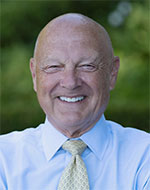 James O. Ellis, Jr. retired as President and Chief Executive Officer of the Institute of Nuclear Power Operations (INPO), located in Atlanta, Georgia, on May 18, 2012.
James O. Ellis, Jr. retired as President and Chief Executive Officer of the Institute of Nuclear Power Operations (INPO), located in Atlanta, Georgia, on May 18, 2012.
INPO, sponsored by the commercial nuclear industry, is an independent, nonprofit organization whose mission is to promote the highest levels of safety and reliability -- to promote excellence -- in the operation of nuclear electric generating plants.
In 2004, Admiral Ellis completed a distinguished 39-year Navy career. His final assignment was Commander of the United States Strategic Command during a time of challenge and change. In this role, he was responsible for the global command and control of United States strategic and space forces, reporting directly to the Secretary of Defense.
A 1969 graduate of the U.S. Naval Academy, Admiral Ellis was designated a Naval aviator in 1971. His service as a Navy fighter pilot included tours with two carrier-based fighter squadrons, and assignment as Commanding Officer of an F/A-18 strike/fighter squadron. In 1991, he assumed command of the USS Abraham Lincoln, a nuclear-powered aircraft carrier. After selection to Rear Admiral, in 1996 he served as a carrier battle group commander leading contingency response operations in the Taiwan Straits.
His shore assignments included numerous senior military staff tours; senior command positions included Commander in Chief, U.S. Naval Forces, Europe and Commander in Chief, Allied Forces, Southern Europe during a time of historic NATO expansion. He led United States and NATO forces in combat and humanitarian operations during the 1999 Kosovo crisis.
Mr. Ellis holds a master’s degree in aerospace engineering from the Georgia Institute of Technology and, in 2005, was inducted into the school’s Engineering Hall of Fame. He completed United States Navy Nuclear Power Training and was qualified in the operation and maintenance of naval nuclear propulsion plants. He is a graduate of the Navy Test Pilot School and the Navy Fighter Weapons School (Top Gun). In 2013, Mr. Ellis was elected to the National Academy of Engineering.
In 2009 he completed three years of service as a Presidential Appointee on the President’s Intelligence Advisory Board and, in 2006, he was a member of the Military Advisory Panel to the Iraq Study Group.
Mr. Ellis currently serves as an Annenberg Distinguished Fellow at the Hoover Institution at Stanford University where he also held an appointment as an Adjunct Professor in the Department of Management Science and Engineering. A former Chairman of the Board of the Space Foundation, in 2018 he was appointed Chairman of the User’s Advisory Group to the Vice President’s National Space Council, serving until 2022. He is the former Chairman of the Board of Level 3 Communications and serves on the board of directors of the Lockheed Martin Corporation and Dominion Energy, Inc.
BG Annmarie Anthony, USSTRATCOM J3
 Brig. Gen. AnnMarie K. Anthony serves as both the Deputy Director of Operations for Joint Electromagnetic Spectrum Operations and the Mobilization Assistant to the Director of Operations, U.S. Strategic Command, at Offutt Air Force Base, Neb. She is responsible for two organizations assigned to USSTRATCOM, the Joint Electromagnetic Warfare Center and Joint Electromagnetic Preparedness for Advanced Combat. General Anthony also serves as the principal advisor to the Director of Operations on Reserve Component matters, synchronizing component, joint, and coalition operations and directing assigned forces to achieve USSTRATCOM and National objectives.
Brig. Gen. AnnMarie K. Anthony serves as both the Deputy Director of Operations for Joint Electromagnetic Spectrum Operations and the Mobilization Assistant to the Director of Operations, U.S. Strategic Command, at Offutt Air Force Base, Neb. She is responsible for two organizations assigned to USSTRATCOM, the Joint Electromagnetic Warfare Center and Joint Electromagnetic Preparedness for Advanced Combat. General Anthony also serves as the principal advisor to the Director of Operations on Reserve Component matters, synchronizing component, joint, and coalition operations and directing assigned forces to achieve USSTRATCOM and National objectives.
General Anthony is a distinguished graduate of the Reserve Officer Training Corps program and was awarded a Bachelor of Science degree in Physics from Harvey Mudd College in Claremont, Calif. Much of her Active Duty career was spent in the 38th Reconnaissance Squadron at Offutt AFB, Neb., where she flew on the RC-135 aircraft. In 2002, General Anthony transitioned to the Nebraska Air National Guard’s newly formed 170th Group. She has commanded the 155th Force Support Squadron and the 155th Mission Support Group. Prior to assuming her current military position, General Anthony was the National Guard Advisor to USSTRATCOM.
Neal Ziring, Technical Director, Cybersecurity Directorate, National Security Agency (NSA)
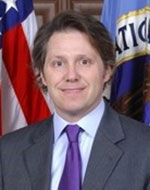
Mr. Neal Ziring is the Technical Director for the National Security Agency (NSA)’s Cybersecurity Directorate. In that role, he is responsible for a wide variety of technical assessment, external engagement, workforce developments, and strategic direction issues for NSA’s cybersecurity mission. In his past position, he served as the Technical Director of the NSA Capabilities Directorate. In that role, he tracked technical initiatives, promoted the professional health of a diverse technical staff, and served as liaison to various external partners. Prior to the formation of the Capabilities Directorate, Mr. Ziring served as Technical Director of the Information Assurance Directorate for five years.
His personal expertise areas include security automation, IPv6, cloud computing, cross-domain information exchange, data access control, and cyber defense.
Prior to coming to NSA in 1988, Neal worked at AT&T Bell Labs. He has BS degrees in Computer Science and Electrical Engineering, and an MS degree in Computer Science, all from Washington University in St. Louis. Since then, he has also taken classes from Columbia University, the University of Maryland Baltimore County, and George Washington University.
Classified Program Panel Moderators
Lt General Robert Elder, (USAF, Retired)
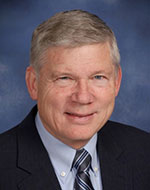 Lieutenant General Robert Elder (USAF, retired) joined the George Mason University faculty as a research professor with the Volgenau School of Engineering following his retirement from military service as the Commander of 8th Air Force and U.S. Strategic Command’s Global Strike Component. He currently conducts research in the areas of command and control, assured communications, strategic stability and deterrence, competition-cooperation management, and international actor decision-making. General Elder served as the Central Command Air Forces Deputy Commander for Operation Enduring Freedom, Air Operations Center Commander and Deputy Air Component Commander for Operation Iraqi Freedom, and Commandant of the Air War College. He was the first commander of Air Force Network Operations and led the development of the cyberspace mission for the Air Force. He received his Doctorate in Engineering from the University of Detroit.
Lieutenant General Robert Elder (USAF, retired) joined the George Mason University faculty as a research professor with the Volgenau School of Engineering following his retirement from military service as the Commander of 8th Air Force and U.S. Strategic Command’s Global Strike Component. He currently conducts research in the areas of command and control, assured communications, strategic stability and deterrence, competition-cooperation management, and international actor decision-making. General Elder served as the Central Command Air Forces Deputy Commander for Operation Enduring Freedom, Air Operations Center Commander and Deputy Air Component Commander for Operation Iraqi Freedom, and Commandant of the Air War College. He was the first commander of Air Force Network Operations and led the development of the cyberspace mission for the Air Force. He received his Doctorate in Engineering from the University of Detroit.
Dr. Michael Zatman, Principal Director OUSD R&E
Dr. Michael Zatman has served as the Principal Director for Integrated Network Systems of Systems (formerly FNC3) in the Office of the Under Secretary of Defense for Research and Engineering since January 2019, and is also detailed to the Joint Staff J6 half-time since November 2021. He is responsible for leading the Nation's vision and strategy for networking, command, control and communications to support and enhance the Department’s warfighting capability. He has provided both organizational and technical leadership to the creation, development and fielding of new technologies, and is a recognized expert in communications, radar, and sensor systems.
Dale A. Ormond, MITRE Distinguished Engineer
 Dale A. Ormond serves as the Chief Engineer for the MITRE DoD Chief Information Officer (CIO)/Defense Information Service Agency (DISA) portfolio where he oversees the technical work planning, execution, and quality of the MITRE work. Prior to joining MITRE in September 2018, he served as the Director for Science & Technology in the Office of the Under Secretary of Defense for Research and Engineering where he oversaw and coordinated $13B of S&T funding across the Department of Defense ranging from basic to applied engineering for technology development and led the Reliance 21 program, which integrates DoD’s research investments across the military services and defense agencies in 14 critical areas to solve critical technology challenges.
Dale A. Ormond serves as the Chief Engineer for the MITRE DoD Chief Information Officer (CIO)/Defense Information Service Agency (DISA) portfolio where he oversees the technical work planning, execution, and quality of the MITRE work. Prior to joining MITRE in September 2018, he served as the Director for Science & Technology in the Office of the Under Secretary of Defense for Research and Engineering where he oversaw and coordinated $13B of S&T funding across the Department of Defense ranging from basic to applied engineering for technology development and led the Reliance 21 program, which integrates DoD’s research investments across the military services and defense agencies in 14 critical areas to solve critical technology challenges.
From 2012 to 2014, Mr. Ormond served as the first civilian Director of the US Army Research, Engineering, and Development Command where he led a workforce of 25,000 that annually committed, obligated, and executed over $6B in research funding in seven major research centers with offices and investments around the world. From 2008 to 2011, he served as the first two-star civilian equivalent Deputy to the Commanding General at the US Combined Arms Center at Ft. Leavenworth where he led the establishment of the Mission Command Center of Excellence. Prior to this in 2004, he served as the Deputy Assistant Secretary of the Army, Elimination of Chemical Weapons and was also dual hatted for a year as the Director, US Army Chemical Materials Agency, where he was responsible for the safe storage and destruction of the US Chemical Warfare Stockpile to meet US international treaty obligations.
Before becoming a member of the Senior Executive Service, Mr. Ormond was the Site Project Manager at the US Army’s Tooele Chemical Agent Disposal Facility in Tooele, UT, where he led the safe and environmentally compliant operations at the US’s chemical warfare agent disposal facility incinerating the nation’s largest inventory of chemical warfare agent and munitions and as the Senior Program Manager for the Transuranic, Mixed, and Hazardous Waste Program at DoE Savannah River Site (SRS), where he was instrumental in both the opening of the Waste Isolation Pilot Plant in Carlsbad, NM and initiating shipments from SRS.
Mr. Ormond graduated from the United States Naval Academy with Distinction and served in uniform as a nuclear qualified submariner and naval intelligence officer. He is also a 1998 graduate of Clemson University where he earned a M.S. in Environmental Systems Engineering. Mr. Ormond has received two US Army Civilian Distinguished Service Medals and in 2008, the Meritorious Presidential Rank Award.
Classified Program Panelists
Mr. Eric Fischer, OUSD A&S, Senior EW Specialist
Mr. Eric Fischer is a Senior Electronic Warfare (EW) Specialist supporting the Director of EW in the Office of the Undersecretary of Defense for Acquisition & Sustainment (OUSD (A&S)). As part of the Platforms & Weapons Portfolio Management (P&WPM) office, the EW Directorate conducts capability portfolio management to manage, analyze, and inform acquisition and resourcing decisions across the EW portfolio. In this role, he also directly supports the EW Capabilities Team (EWCT), which serves as the Executive Secretariat for the 4-star EW Executive Committee (EW EXCOM), the Department’s most senior EW body.
Prior to joining OUSD (A&S), Mr. Fischer served as a Senior Researcher in the Tactical Electronic Warfare Division at The U.S. Naval Research Laboratory (NRL). In that role, he led applied research and technology demonstration programs to develop critical EW capabilities for Navy ship defense applications. In addition, he also led a team of scientists and engineers that developed high fidelity modeling and simulation capabilities for multi-platform EW and EMSO analysis in complex environments.
Mr. Fischer received his Bachelor of Science degree in electrical engineering from the University at Buffalo and his Master of Science degree in electrical engineering from the University of Maryland.
Mrs. Vernita Harris, DoD CIO, Director Electromagnetic Spectrum, Enterprise Policy & Programs
 Mrs. Vernita D. Harris is a member of the Senior Executive Service and serves as the Director Electromagnetic Spectrum Enterprise Policy & Programs. In this role, she provides executive leadership, strategic guidance, implementation and direction for management and use of the electromagnetic spectrum, develops and coordinates DoD’s spectrum, Internet, and information and telecommunication policy positions with the Department of State, National Telecommunications and Information Administration (NTIA) and the Federal Communications Commission (FCC). Mrs. Harris serves as the focal point for all matters pertaining to the International Telecommunication Union (ITU). She leads a team of policy experts that coordinates with other federal agencies, our international partners in support of the Department’s and DoD CIO’s missions, goals and objectives regarding the management and use of the electromagnetic spectrum, Internet and information and telecommunications policy goals.
Mrs. Vernita D. Harris is a member of the Senior Executive Service and serves as the Director Electromagnetic Spectrum Enterprise Policy & Programs. In this role, she provides executive leadership, strategic guidance, implementation and direction for management and use of the electromagnetic spectrum, develops and coordinates DoD’s spectrum, Internet, and information and telecommunication policy positions with the Department of State, National Telecommunications and Information Administration (NTIA) and the Federal Communications Commission (FCC). Mrs. Harris serves as the focal point for all matters pertaining to the International Telecommunication Union (ITU). She leads a team of policy experts that coordinates with other federal agencies, our international partners in support of the Department’s and DoD CIO’s missions, goals and objectives regarding the management and use of the electromagnetic spectrum, Internet and information and telecommunications policy goals.
Mrs. Harris began her Federal career in 1999 with the Department of Commerce, NTIA’s Office of Spectrum Management (OSM) where she provided strong leadership necessary to solve multiple radio frequency spectrum management issues domestically and internationally. In 2007, Mrs. Harris transitioned to the Office of International Affairs (OIA) and subsequently became the Deputy Associate Administrator for overall domestic and international policy strategies affecting Internet policymaking, standards development issues, governance issues, cybersecurity, emerging technologies and the digital economy.
Mrs. Harris has led and served on numerous U.S. Delegations to regional and global intergovernmental organizations, including all major UN ITU treaty-making conferences since 2000. Before joining the U.S. Government, Mrs. Harris worked for Iridium, LLC.
Mrs. Harris has a Bachelor’s Degree in Business Administration with Minor in Management, from Trinity College, Washington, D.C.
Eric J. Brown, Vice President, Military Space Advanced Program Development, Lockheed Martin Space
 Eric Brown is the Vice President of Advanced Program Development for Lockheed Martin’s Military Space business, working with the U.S. Government and its allies to develop space solutions with a particular focus on the following mission areas: missile warning and defense; military satellite communications (MILSATCOM); position, navigation, timing (PNT); space control; space domain awareness; and tactical integration. Mr. Brown leads Lockheed Martin’s developmental efforts from architectural design through research & development and ultimately defining operational warfighting capabilities. He oversees the coordination of company’s investments in future capabilities with those of teammates in industry, academia, research labs, and the U.S. Government to establish new architectures responsive to emerging threats to space and missions. Based on the criticality of space to today’s global security, Mr. Brown coordinates the space enablement across Lockheed Martin’s complete portfolio, which includes fighter aircraft, missiles and mission systems, to provide warfighters the tools needed to sustain US and allied operational advantage.
Eric Brown is the Vice President of Advanced Program Development for Lockheed Martin’s Military Space business, working with the U.S. Government and its allies to develop space solutions with a particular focus on the following mission areas: missile warning and defense; military satellite communications (MILSATCOM); position, navigation, timing (PNT); space control; space domain awareness; and tactical integration. Mr. Brown leads Lockheed Martin’s developmental efforts from architectural design through research & development and ultimately defining operational warfighting capabilities. He oversees the coordination of company’s investments in future capabilities with those of teammates in industry, academia, research labs, and the U.S. Government to establish new architectures responsive to emerging threats to space and missions. Based on the criticality of space to today’s global security, Mr. Brown coordinates the space enablement across Lockheed Martin’s complete portfolio, which includes fighter aircraft, missiles and mission systems, to provide warfighters the tools needed to sustain US and allied operational advantage.
Prior to joining Lockheed Martin Space, Mr. Brown led PwC Strategy &’s global space community of practice, providing strategic consultation on topics of competitive positioning, new technology introduction, and inorganic strategy to executives across aerospace, defense, space, industrial, and technology sectors. Previously, he supported various agencies across the intelligence and defense communities in the development of mission and organizational strategies and concepts of operations to respond to evolving threats and critical national requirements
Mr. Brown holds a Bachelor of Arts from Davidson College, a Master of Arts in National Security Policy from Georgetown University, and a Master of Business Administration from Duke University’s Fuqua School of Business. He currently sits on the Board of Directors for Astrotech Space Operations, a wholly owned subsidiary of Lockheed Martin.
Dr. Frank Turner, Technical Director, Space Development Agency
 Dr. Frank Turner is the Technical Director for the Space Development Agency. He has extensive public and private sector experience in the management and direction of advanced technology research, development, test and evaluation of current and emerging military systems. Dr. Turner began his career as an officer in the United States Air Force, served as a Government Program Manager and certified acquisition professional, a senior leader in industry for both large and small companies, and as a senior analyst for both the Defense Threat Reduction Agency and Defense Advanced Research Projects Agency. His expertise spans space systems, directed energy, nuclear weapons effects, systems engineering, architectures, and operational evaluation and employment. Has successfully led some of the nation’s most difficult and challenging RDT&E programs, creating technical advantage for America's warfighters. Dr. Turner has academic degrees in physics, biology, business and engineering and has completed military education with the U.S. Air Force, U.S. Navy and U.S. Marine Corps.
Dr. Frank Turner is the Technical Director for the Space Development Agency. He has extensive public and private sector experience in the management and direction of advanced technology research, development, test and evaluation of current and emerging military systems. Dr. Turner began his career as an officer in the United States Air Force, served as a Government Program Manager and certified acquisition professional, a senior leader in industry for both large and small companies, and as a senior analyst for both the Defense Threat Reduction Agency and Defense Advanced Research Projects Agency. His expertise spans space systems, directed energy, nuclear weapons effects, systems engineering, architectures, and operational evaluation and employment. Has successfully led some of the nation’s most difficult and challenging RDT&E programs, creating technical advantage for America's warfighters. Dr. Turner has academic degrees in physics, biology, business and engineering and has completed military education with the U.S. Air Force, U.S. Navy and U.S. Marine Corps.
Dr. Todd A. Sriver, Director, Nuclear Command, Control, and Communications
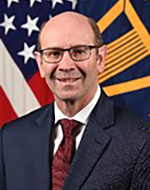 Dr. Todd Sriver is the Director of Nuclear Command, Control, and Communications (NC3), within the Office of the Under Secretary of Defense for Acquisition and Sustainment (OUSD(A&S)). In this position, he is responsible for the comprehensive development of NC3 plans, policy guidance, and management standards and recommends resource allocations and direction for the programs, projects, and systems within the NC3 portfolio.
Dr. Todd Sriver is the Director of Nuclear Command, Control, and Communications (NC3), within the Office of the Under Secretary of Defense for Acquisition and Sustainment (OUSD(A&S)). In this position, he is responsible for the comprehensive development of NC3 plans, policy guidance, and management standards and recommends resource allocations and direction for the programs, projects, and systems within the NC3 portfolio.
Dr. Sriver leads the analysis of the NC3 portfolio to achieve mission and program outcomes (cost, schedule, performance, risk, and security); establishes and maintains the portfolio system of systems risk management plan to identify, mitigate and track enterprise risks; establishes enterprise security construct to monitor and report on cyber and supply chain risks, issues, and mitigation plans; and develops mission focused future capability plans to inform NC3 modernization investment decisions.
Dr. Sriver partners with U.S. Strategic Command to address acquisition, resource, and policy challenges to inform operational risk assessment, and ensure the modernization of a secure, effective, and resilient NC3 system for the nation’s nuclear deterrent.
Dr. Sriver was commissioned as a second lieutenant in the U.S. Air Force and served in uniform for 27 years, retiring as a Colonel. In his last seven years, he served as Chief of the NC3 Division, Deputy Chief of Staff for Strategic Deterrence and Nuclear Integration, Headquarters United States Air Force, where he led a division responsible for developing NC3 plans and policies, integrating NC3 governance, sustainment, modernization, and recapitalization efforts to ensure reliable Air Force NC3 capabilities. During his Air Force career, Dr. Sriver commanded a Manpower Requirements Squadron, and served in various roles at the Squadron, Center, Major Command, Air Staff, and Joint Staff levels.
Prior to joining the Office of the Secretary of Defense as a member of the Senior Executive Service, Dr. Sriver worked for the MITRE Corporation as a NC3 Principal Systems Engineer. While at MITRE, his efforts focused on next generation NC3, integration of NC3 with Joint All- Domain Command and Control (JADC2), and support to the Joint Staff, USSTRATCOM NC3 Enterprise Center, and military services with NC3 missions.
Classified Program Speakers
Mr. Michael Roberts, Executive Director and Deputy DRPM, Overmatch
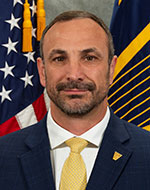 Michael Roberts, a member of the Senior Executive Service, is the Executive Director and Deputy DRPM for Overmatch, USN. As the Executive Director and senior civilian Mr. Roberts oversees the development and delivery of the Naval Operational Architecture (NOA) which enables the Navy to be a connected and adaptable force that can plan, coordinate, and execute Distributed Maritime Operations (DMO).
Michael Roberts, a member of the Senior Executive Service, is the Executive Director and Deputy DRPM for Overmatch, USN. As the Executive Director and senior civilian Mr. Roberts oversees the development and delivery of the Naval Operational Architecture (NOA) which enables the Navy to be a connected and adaptable force that can plan, coordinate, and execute Distributed Maritime Operations (DMO).
Classified Program Schedule
THURSDAY, 1 DECEMBER 2022
|
Transport to MITRE McLean |
|
|
Breakfast/Check-in |
|
| MITRE 4 Robb Auditorium | MITRE 3, 0T512 |
|
Welcome |
Open |
|
Keynote |
Open |
|
Navy Project OM |
Joint Electromagnetic Spectrum Operations (JEMSO) Keynote |
|
Coffee Break |
|
|
Advancing JADC2 across the DoD |
PANEL: DoD Electromagnetic Spectrum Superiority: Strategy to Implementation |
| Industry Viewpoints on Army Project Convergence 10:50-11:30 Toby Magsig, L3/Harris |
|
|
|
Adaptive ultra-wideband RF transceiver and air interface for secure high data rate and low-observable communications |
|
PANEL: Achieving Decision Advantage through JADC2 |
Spread Spectrum Extension to the Protected Tactical Waveform |
|
Lunch |
|
|
PANEL: Future NC3 |
PANEL: Advanced Networking Technology for Command and Control |
|
Break |
|
|
PANEL: NC3 – JADC2 Integration |
A Waveform Resilience Framework |
|
Low Probability of Detection Analysis Methodology |
|
|
Distributing Sensor and Communication Networks To Enable Unmanned Platform Pursuit Of Targets Of Interest |
|
|
|
|
|
Reception |
|
|
Transport to hotel |
|
FRIDAY, 2 DECEMBER 2022
|
Transport to MITRE McLean |
|
|
Breakfast/Check-in |
|
| Space Track | Cyber Track |
|
Keynote |
Networking Breakfast |
|
Keynote |
|
|
Coffee Break |
|
|
Threats to Critical Infrastructure Networks from Space Threats to Space Critical Infrastructure Integrating Hybrid Space Capabilities |
Cyber Threat Hunting NextGenC4: Threat Informed Networks Threats to Critical Infrastructure Networks from Space |
|
Comparison of Passive RF Detection and Targeting Threat |
|
|
|
Bandwidth-Constrained Detection of Pulsed and Continuous Signals in Noise of Unknown Power |
|
|
|
|
HF Performance in Disturbed Channels |
|
|
Networking Lunch |
|
|
Transport to hotel |
|




